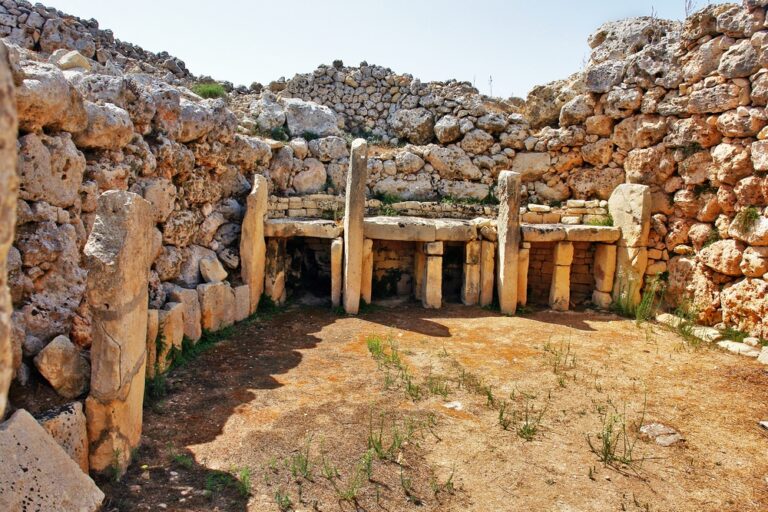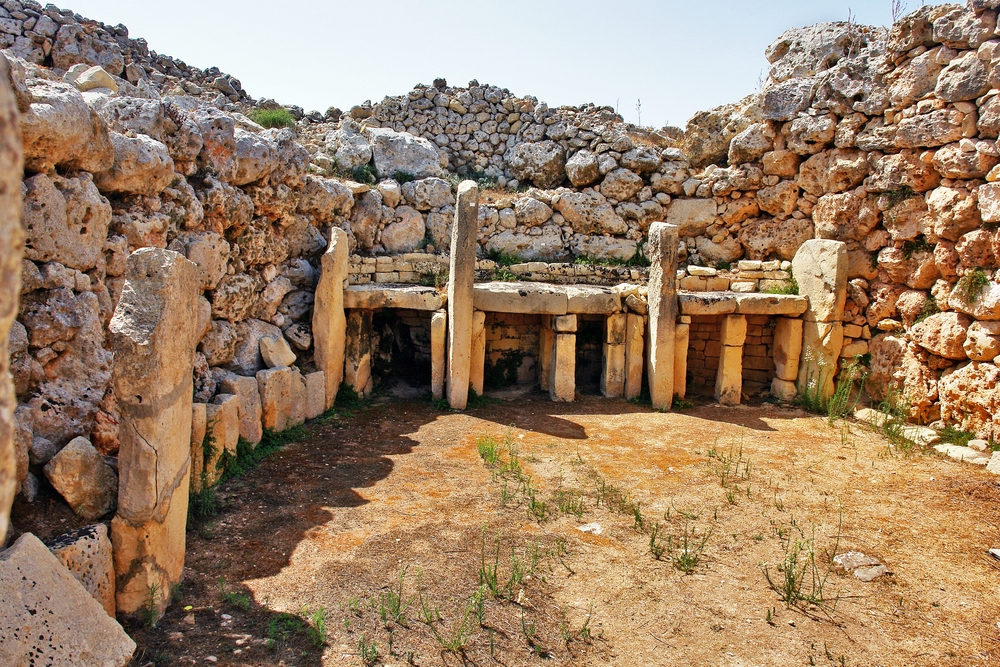
[ad_1]

When people think of ancient structures, they often think of the Egyptian pyramids or the standing stones of Stonehenge. They might think of the Olmec colossal heads in Mexico or the hundreds of statues on Easter Island.
The Neolithic temples of Malta, however, are older than all of these famed sites and were constructed between 5,600 and 4,500 B.C.E. Despite their ancient age, many have survived.
Although the buildings have endured, an understanding of how the structures were once used has been lost to history. Were they even temples? Or did people use them otherwise?
In the past decade, new technology has enabled researchers to learn more about these mysterious monuments.
What are the Neolithic Temples of Malta?
UNESCO added the Maltese temples to its list of World Heritage sites in 1980 and describes each as a “unique architectural masterpiece.” Although each is distinct, the temples share commonalities. Most have an entrance that leads through a passageway. Inside, there are chambers shaped like a half-circle, and each building has three or six chambers.
The temples were made from locally sourced stone. The outside is made from coralline limestone, and the internal walls are globigerina limestone.
(Credit: Ingrid Pakats/Shutterstock)
Read More: Five Megastructures From The European Stone Age Still Around Today
Why Were The Megalithic Temples Built?
About 30 of the temples are still standing in the Maltese Islands. Although archeologists can estimate when they were built and the materials used, they don’t have a firm understanding of how they were used.
The temples might have been actual temples used for religious ceremonies, and researchers have excavated carvings that resemble the Venus of Willendorf.
However, the structures also contain evidence of animal slaughtering. Researchers have unearthed tethering holes and the remains of animal bones. The animals could have been slaughtered in a ritual sacrifice, or the temples could have been a place for food processing. Archeologists have also found evidence of corn grinding tools.
This means archeologists currently don’t agree on how the temples were used and some argue they were used as community gathering places. Without a written record to confirm, scientists can only speculate at this point. This means the Neolithic Temples of Malta are similar to other ancient structures like Stonehenge in the sense that scientists can’t be sure how they were used, only that they were significant to the people who built them.
Read More: Finding Monuments Beyond Stonehenge
Examining Ruins of the Ġgantija Temple
Although the Neolithic temples of Malta are stone structures that have endured for thousands of years, the roofs are completely gone — if they ever existed. For years, scientists have debated which material was likely used for the roofs or if there even were roofs.
In recent years, advancements in technology have enabled researchers to examine the structures in new and more thorough ways.
In a 2019 study in Digital Applications in Archaeology and Cultural Heritage, researchers used photogrammetry and 3D reconstruction to address an issue of “intense debate” — whether there were indeed roofs and what material was possibly used.
With photogrammetry, a researcher takes thousands of overlapping photographs of a subject and then uses computer software to build layers with the images. The detailed results allow researchers to scrutinize a subject more closely, according to Madeline G.P. Robinson, a doctoral student at The University of Sydney and the study’s lead researcher.
Robinson took more than 25,000 pictures and focused on the Hypogeum of Hal Saflieni, a burial complex. She then uploaded the images into a software program, which took three weeks to process. “It was a stressful three weeks for me,” Robinson said.
After analyzing the data, Robinson saw carved façades, meaning there was strong evidence the temple indeed had roofs.
Read More: The 3 Secrets Behind Ancient Maya’s Super Strong Architecture
An Ongoing Debate: Timber vs. Stone Roofs
So, were these carved façades intended for wooden or stone roofs?
Robinson says that some archeologists strongly argue the temples had stone roofs. She says that is indeed a viable theory because the structure could have likely supported a stone roof.
Subsequent analysis by other scholars using 3D stress simulation found the temples were built in a way to evenly disperse weight from a stone roof.
Opponents of the stone theory claim the islands would have the discarded stone somewhere in the archeological record.
Other scholars hotly argue the roofs were made of timber, but the anti-timber team argues that not enough trees grew on the island to accommodate the material needs.
“My conclusion is both theories are viable, but we need more information,” Robinson says.
Read More: How the Inca Built Machu Picchu
Future Insights into the Past
Researchers currently have more questions about the Neolithic Temples of Malta than they do answers. Without written records, Robinson says there is no way to truly know how they were used.
“We have these theories, but the truth is quite impenetrable,” she says.
However, she says that advancements in technology may give future scholars the tools they need to uncover the truth. Photogrammetry is becoming increasingly precise, and drone technology is allowing researchers to add aerial images for analysis.
“How tech is progressing every year, you never know in 100 years what we’ll be able to see,” she says.
Read More: Is Gunung Padang the Oldest Pyramid in the World?
Article Sources:
Our writers at Discovermagazine.com use peer-reviewed studies and high-quality sources for our articles, and our editors review them for accuracy and trustworthiness. Review the sources used below for this article:
[ad_2]